What different styles of living room are there? Here's how to pick the right look for your home
From Scandi schemes to the industrial aesthetic, these designs will inspire your living room makeover
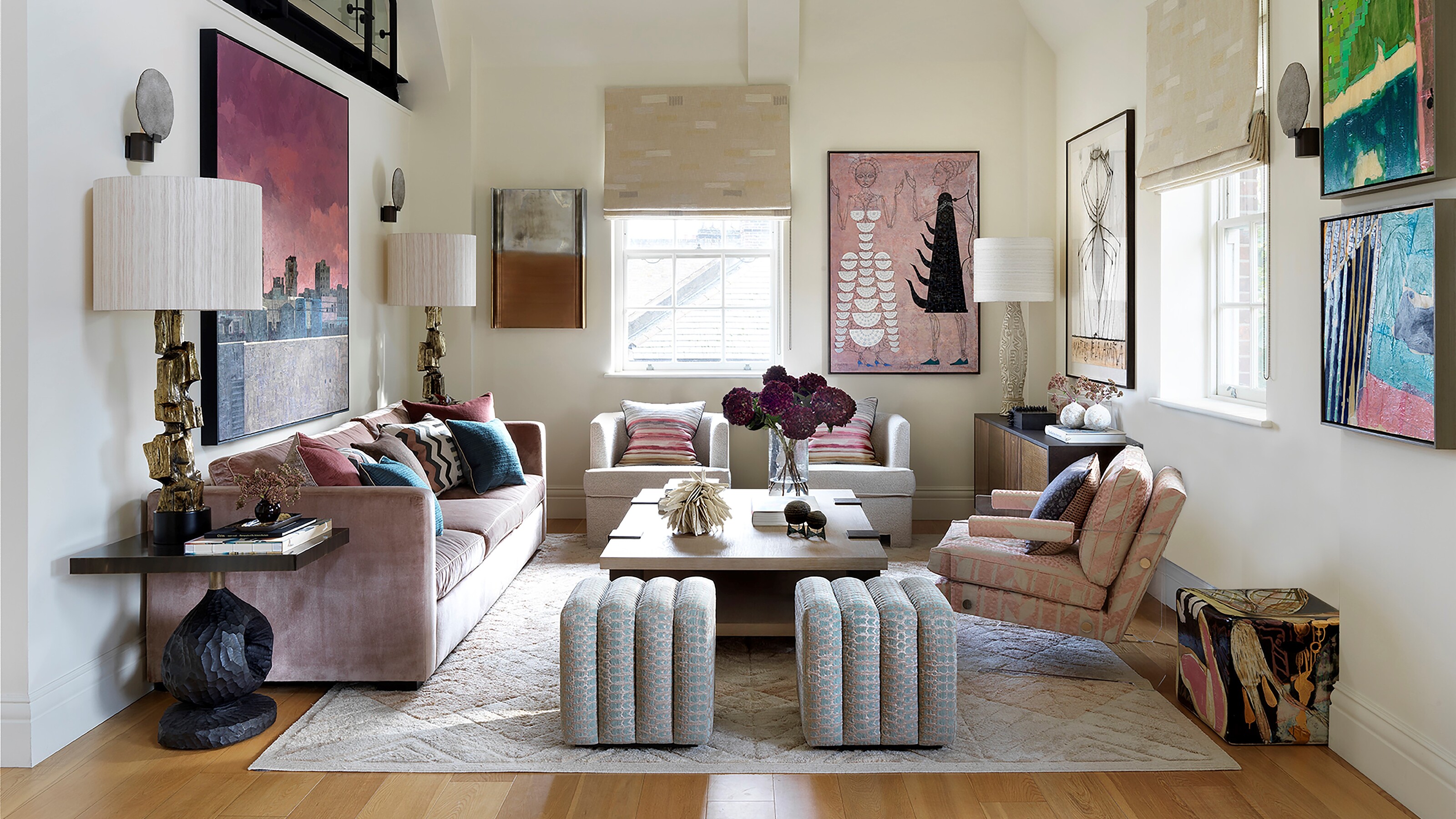

When seeking inspiration for this important part of the home, there is a real array of styles that might call to you. From cozy snugs where the purpose is all about creating an enveloping, cocooning feel, to eclectic spaces primed and ready for hosting and entertaining, to the clean, cool lines of Scandi decor or minimalism, there are many looks to experiment with.
Living room design and the purpose of this room can come in all different shapes and sizes, and is ever-changing, says Eugene Colberg, principal of Colberg Architecture. 'Living rooms and sitting rooms historically were laid out around a hearth. In modern times, it was around a TV. But that doesn’t always happen anymore; what is the living room’s focal point now? You want to make it an awesome space, make the scale something that works, and a room that people enjoy and use daily,' Eugene says.
Here, we explore the styles to consider for your living room.
What different styles of living room are there?
Finding the style of living room that works for you is firstly about conducting some inner reflection. What do you require from the space and what do you need from this particular room? Is it a busy part of the home that incurs frequent footfall? Or is it a quiet place for a moment of calm? Identifying this first and you're one step closer to finding the living room style that suits you.

Oonagh is an experienced homes writer and editor. For this piece, she used her understanding of the industry and wealth of contacts from the interiors world to find out what different designers thought to be the key interior design styles exhibited in modern living rooms today.
1. Modern elegance
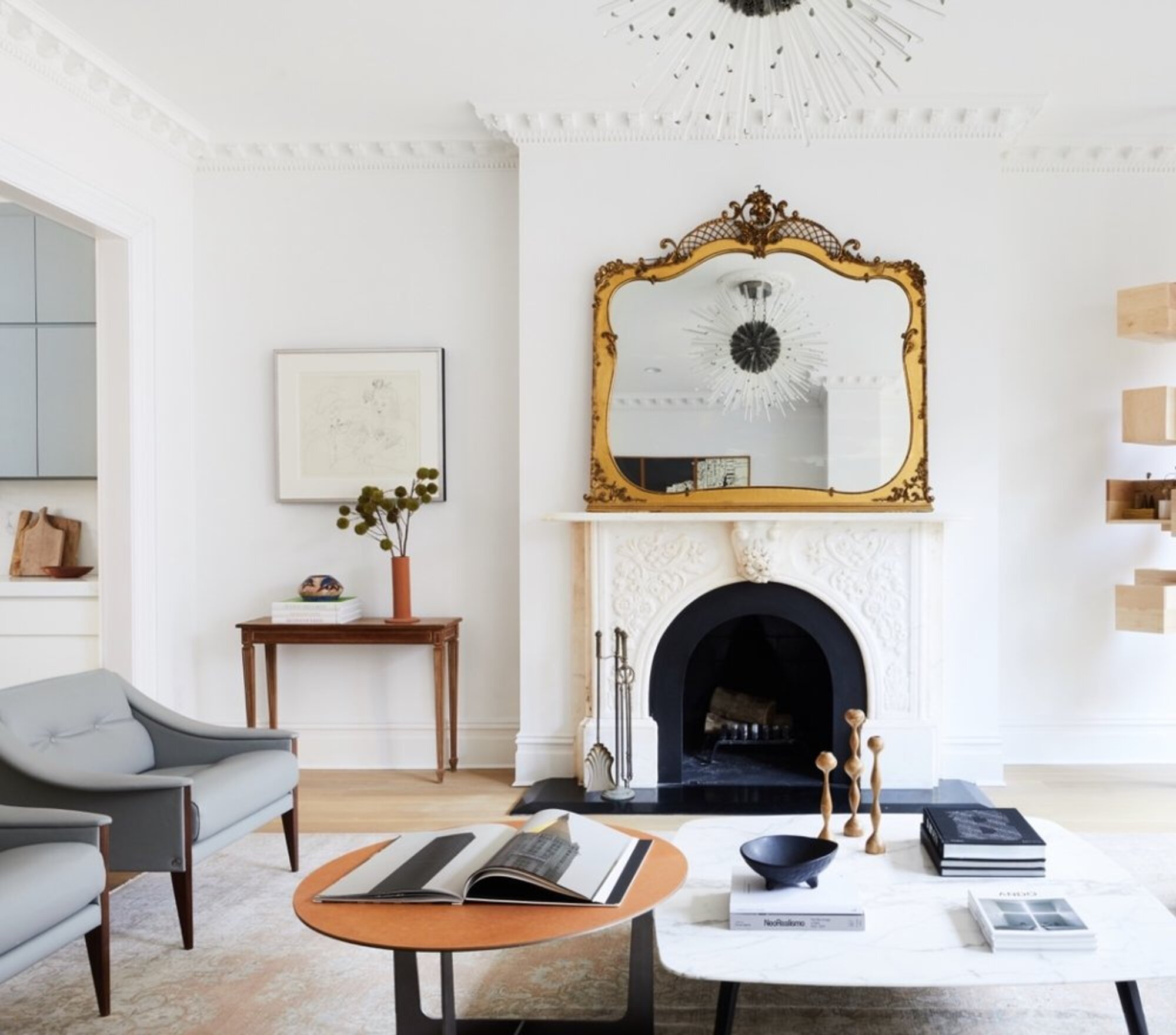
A modern elegant living room has a classical style to that is almost traditional in aesthetic, but brings it right up to the contemporary to avoid anything too
classical, traditional and stuffy. This living room is designed by NYC-based interior design studio, Annie Leslau. The project was for a young couple moving from their Manhattan apartment into a Brooklyn brownstone, and the interiors wanted to reflect the heritage of the home.
Some of the details of the room have a classical, historical look, like the antique mirror, fireplace detail and moldings where the wall meets the ceiling, but the room is brought to the modern day with extra details like the coffee table, which is slightly stacked to give the room some different shapes to focus on, and the interesting lighting fixture. This brings the classical look right into the modern day.
2. Coastal chic
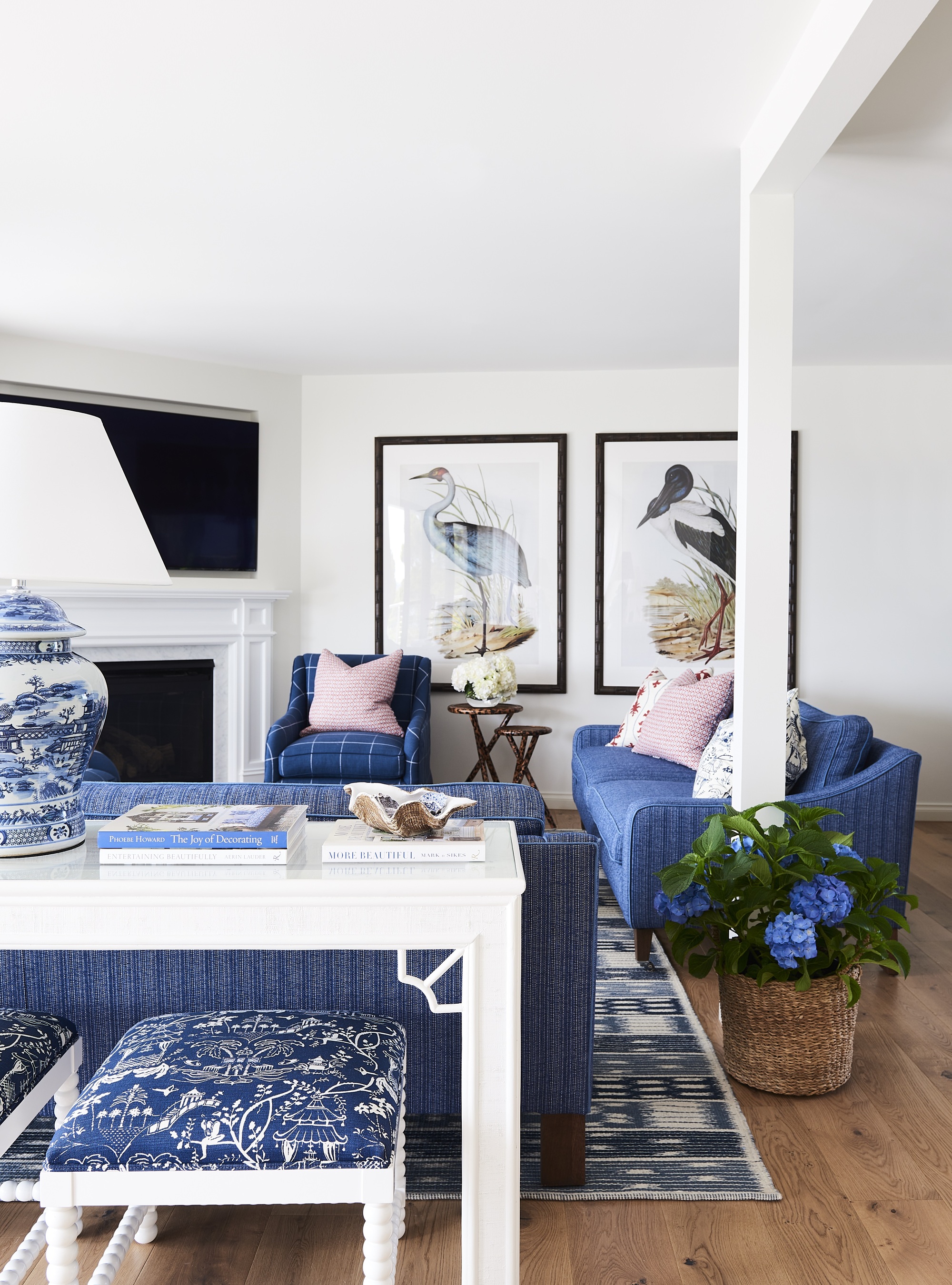
Another look you can embrace in your living room is the coastal style. If you're near the water, this look can really anchor a space and help to give it a strong location-based identity to your living room, but no matter where you are in the world, a touch of the seaside can go a long way to bring a sense of serenity to your home. Think of a palette of blues and whites but avoid too many beachy clichés.
Hamptons style decor is a popular look of this ilk. Interiors are glamorous, sophisticated and effortless. Amy Spargo of Maine House Interiors, who designed the above living room is based in Victoria, Australia, but takes huge inspiration from Hamptons design as a seaside style she admires. ‘A classic maritime palette of blue, red and white is a fun place to start,’ she says. ‘Think rope detailing, textured sisal, printed soft linens and breezy cottons on upholstery. Antiques and vintage art really add to the space,’ she says. The living room is accented with some hydrangeas - synonymous with the Hamptons style.
3. Scandi look
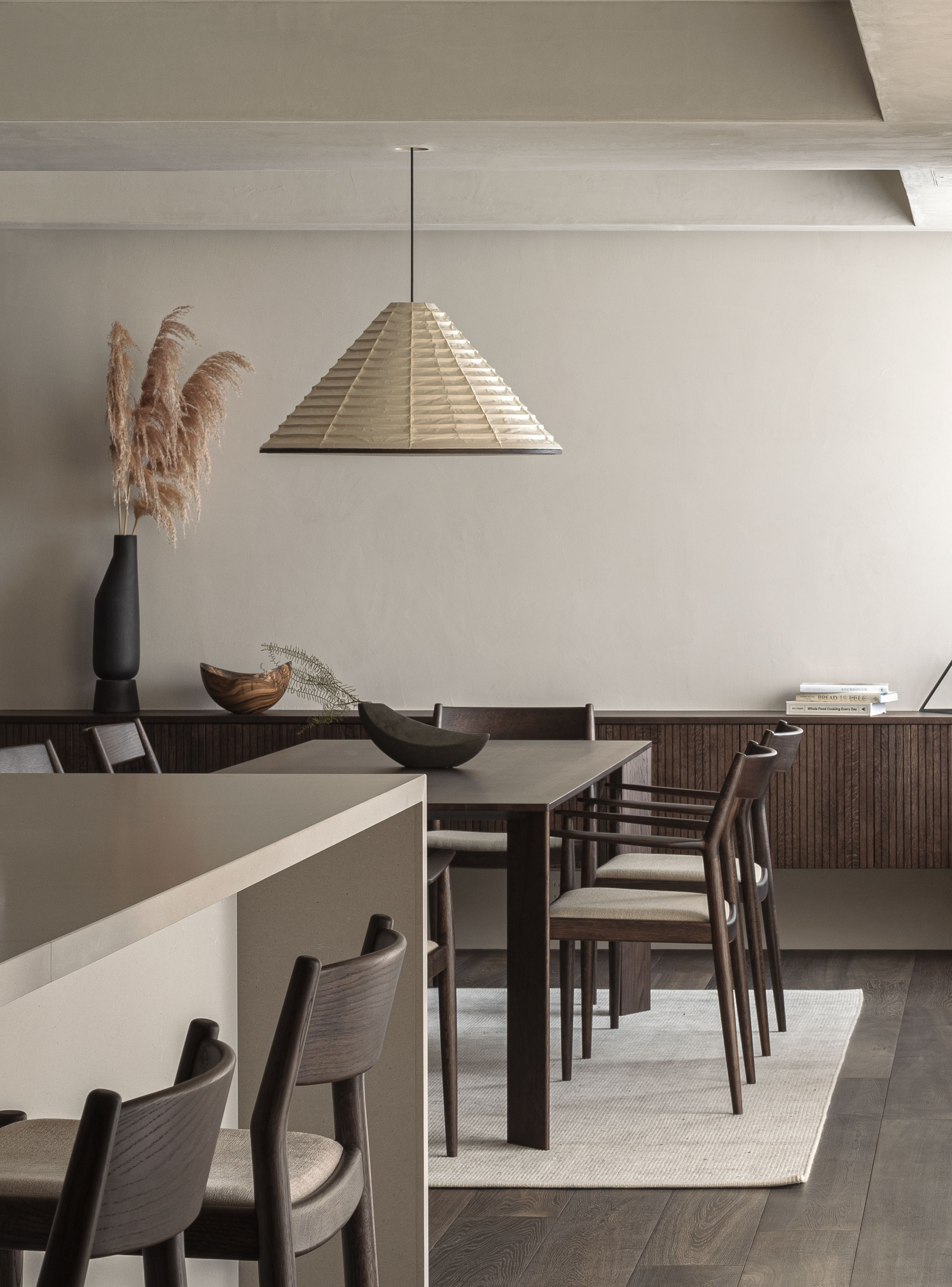
If minimalist decor is your thing, and clean lines, a light palette and an uncluttered living room help you feel calm, Scandi decor is a simple interior design style that can be easily replicated in your living room. Its pillars are a neutral palette and a sense of timelessness where less is more and decor is pared back. Storage is cleverly used to seamlessly hide away clutter and living room accessories are simple, but might include plants, textured fabrics, throws and beautiful high pile wool rugs at most. The Scandi ethos celebrates the bare bones of the room and the natural lighting - so the space is welcoming without any surplus furniture or objects.
Scandi design also has strong ties to nature, with natural materials used in design schemes, the use of wood, and a sustainability focus. 'Materials sourced from nature have always been essential to human beings,' explains Jonas Jonas Bjerre-Poulsen, architect and partner at Copenhagen-based Norm Architects, who designed the above space. 'Wood can be treated to achieve a smooth feel and look or a rustic elegance. Stone can be used in its natural state or obtain a rough or shiny finish.'
4. Modern eclecticism
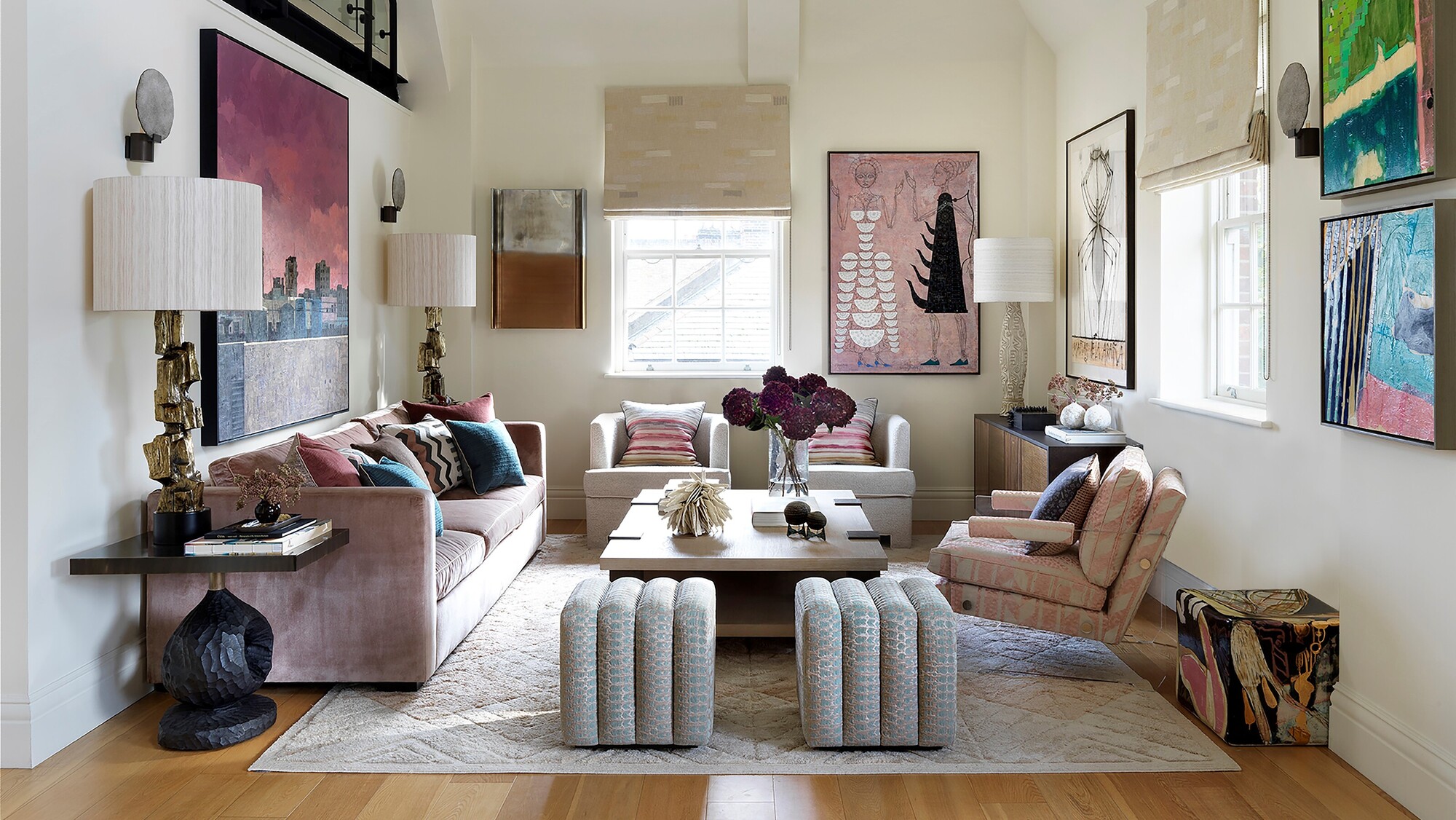
The modern eclectic style is when a blend of styles comes together to look cohesive and acutely personalized, and it's a look that works well in the living room - often a room in the home where personalization is key. Think antique styles, vintage pieces, collectables that are personal to your life, mixed in with a contemporary look. 'Eclectic design wants a mix of styles that seamlessly work together without anything feeling overly designed,' says interior designer Jake Arnold. 'The beauty of collecting and curating, whether that's mixing vintage and custom, prints and solids, or combining various sensory textiles together, often achieves that eclectic look.'
Living room wall art is a big part of this eclectic look and collections can come from all over, from thrift finds that resonate with you, to bigger pieces that you might have purchased at auction. A collection that embraces this mix-and-match look will feel highly personalized and one-of-a-kind.
Designer Natalia Miyar loves to use art to really embrace this modern eclectic look in her own living room, shown here at her home in Searle House. 'Living surrounded by both colour and art is very important to me, as both can make a strong statement in your home. The key is choosing art that doesn't have an affiliation with a particular style but stands out for being different,' she says.
Natalia has sourced her eclectic art collection from all over. 'I really love the architectural style of Cuban artist Gustavo Acosta, whose artwork I have hanging above my sofa: it features a pink Havana skyline. I also discovered a Los Angeles-based artist called Hiejin Yoo a couple of years ago, whose work I absolutely love. Her work is defined by abstracted pops of colour and bold layered marks, so it always felt like there was a nice affinity between her pieces and my own style; her works are perfect for adding a bold statement to a living room,' says Natalia.
5. Modern colorful
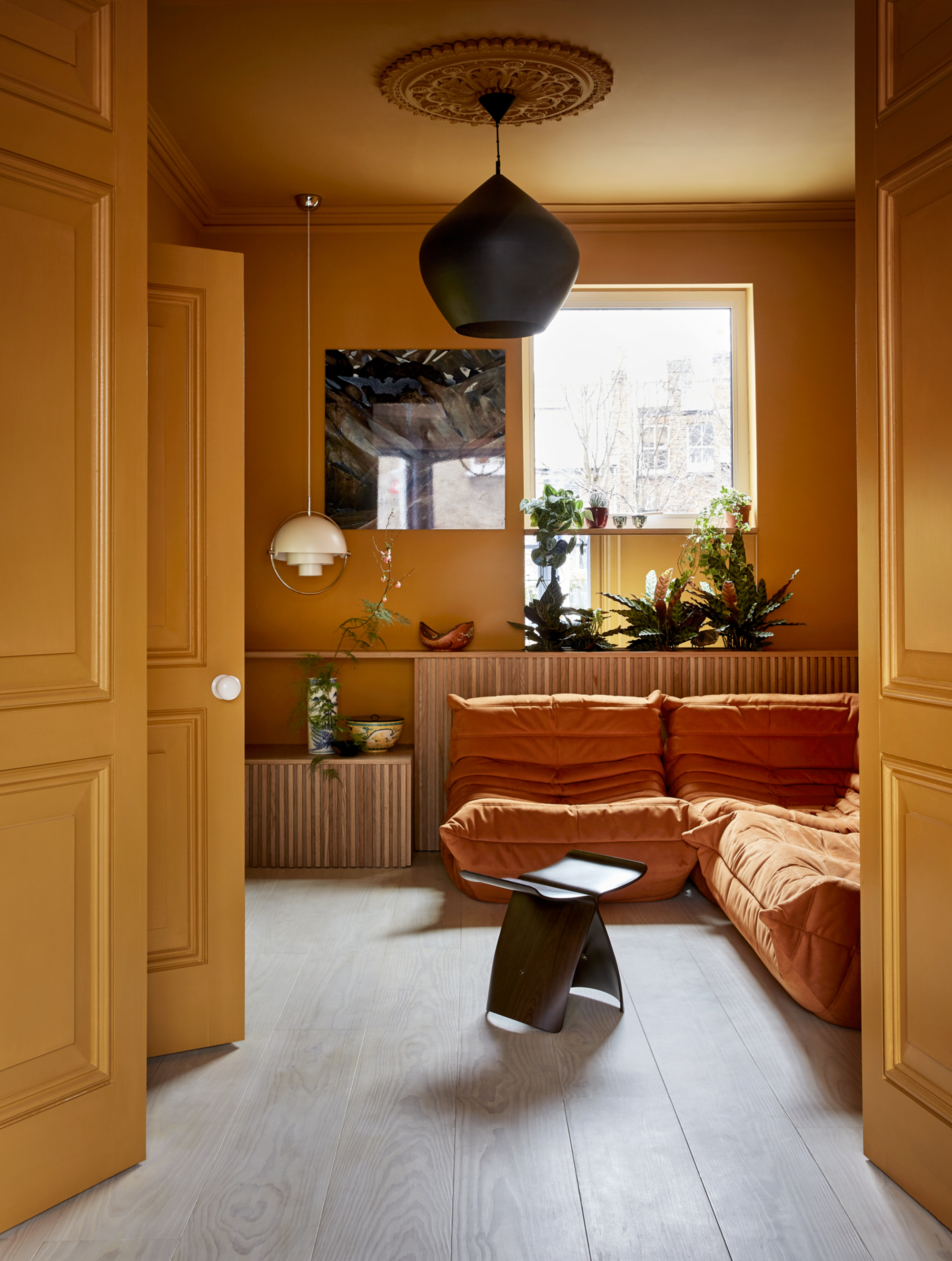
You might want your living room to act as a warming, snug refuge, where at the end of the long day, you can seek sanctuary, snuggle down with a good book and recharge. Think firstly about the colors you might want to create this cocooning mood. Cozy colors for a living room might be dark and sumptuous, like earthy browns, deep forest greens, plum purples. Contrary to popular belief, a dark color on the wall won't necessarily mean your room feels small and tight, but will instead help to create this feeling of coziness. Alternatively, a color from the warm side of the color wheel - oranges, reds, or yellows, can help you feel positive and comfortable. Think about how you use wall paint too. Go monochromatic, along the wall, ceiling and moldings, to really capture this enveloping feel.
Furniture and decor-wise, think about what makes you feel comfortable and cozy. It might be luxurious fabrics like velvet in jewel tones or boucle - both of which look beautiful on an L-shape sofa, or perhaps it's a thick rug or throw. Think about lighting too. The best cozy living room lighting has layers of lighting in pools of light across the room and can be mixed and matched.
6. Modern country aesthetic

The countryside aesthetic needn't necessarily mean twee and traditional, and there is a way of mastering a modern farmhouse look that is cooler and contemporary. Think about how you reference location, but in the natural materials and soft furnishings in the home, like this example from Ellen Hamilton, a designer who deals intimately with color. In this project, a farmhouse living room in Philadelphia was given a countryside look with traditional neutral colors. 'Achieving this look was about texture and color,' says Ellen. 'If you look at our Philly Horse Farm design, that's about as neutral as it gets in terms of the colors used being taupe and ivory.'
If going for the countryside aesthetic in your living room, think coziness and pattern, but avoid anything too cliché. For a bolder take on the countryside, Mind The Gap's Tyrol collection has beautiful rich patterned fabrics in jewel colors, kilim rugs, and Austrian chalet-inspired pieces that can help you tastefully reference countryside style.
7. Mid-century
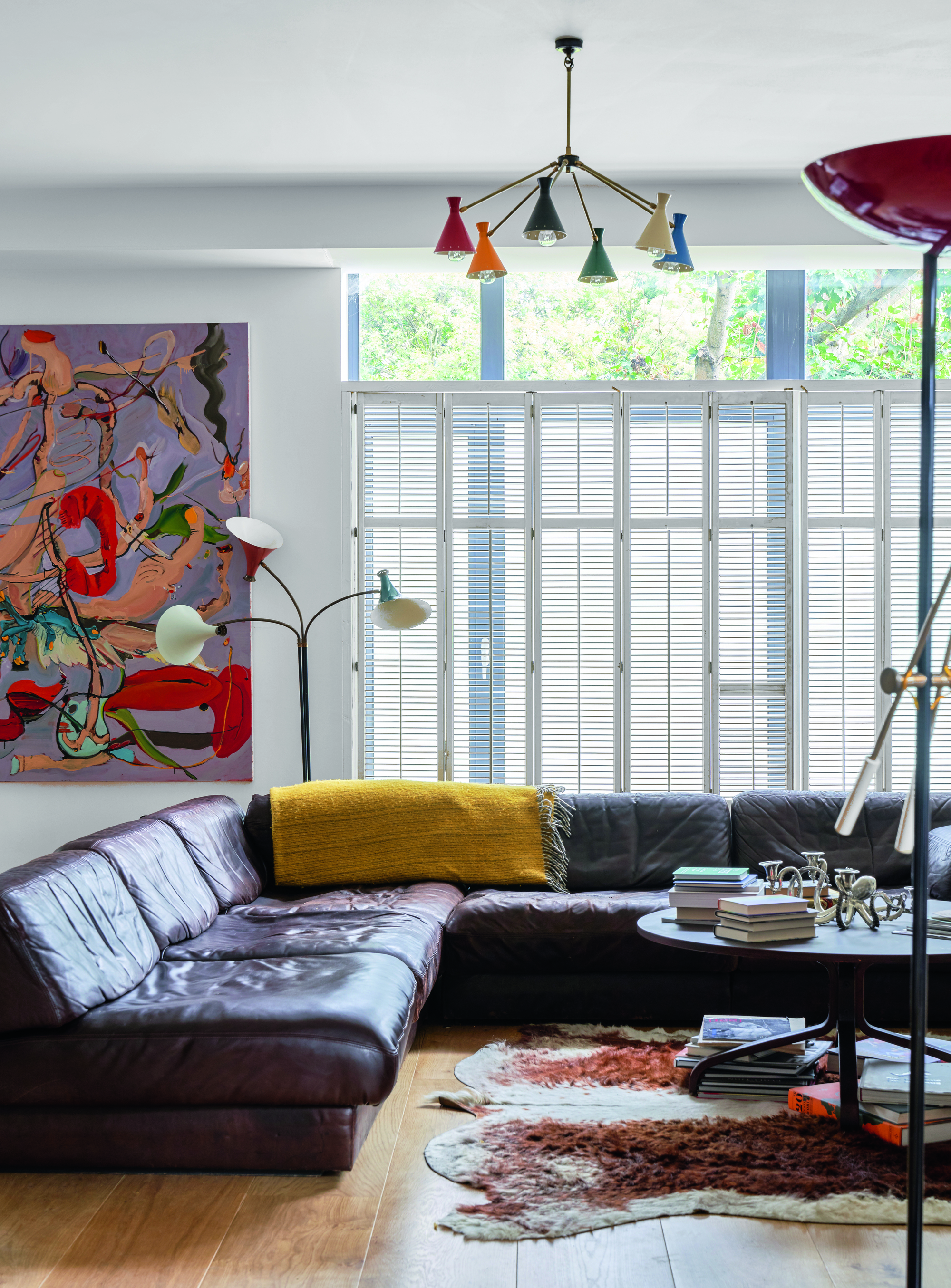
A mid-century look in the living room is proving ever-popular, and has gathered pace in the last few decades. Furniture from the 1920s up until the 1960s can be found relatively easily and affordably, and gives a tasteful retro nod to your interiors. It can be defined as pieces in a dark wood, with fine legs, sleek finishes, while sofas are comfortable, leather.
The color palette is muted - greys, browns, mustards, and black leather, while geometric prints might add a hint of mid-century pattern. It's one of the most popular interior design trends that is lasting the test of time, and would love great in your living room. Kickstart your mid-century research by looking into names such as Arne Jacobsen, Ercol, and Ercolani who are big names in the movement.
8. Industrial
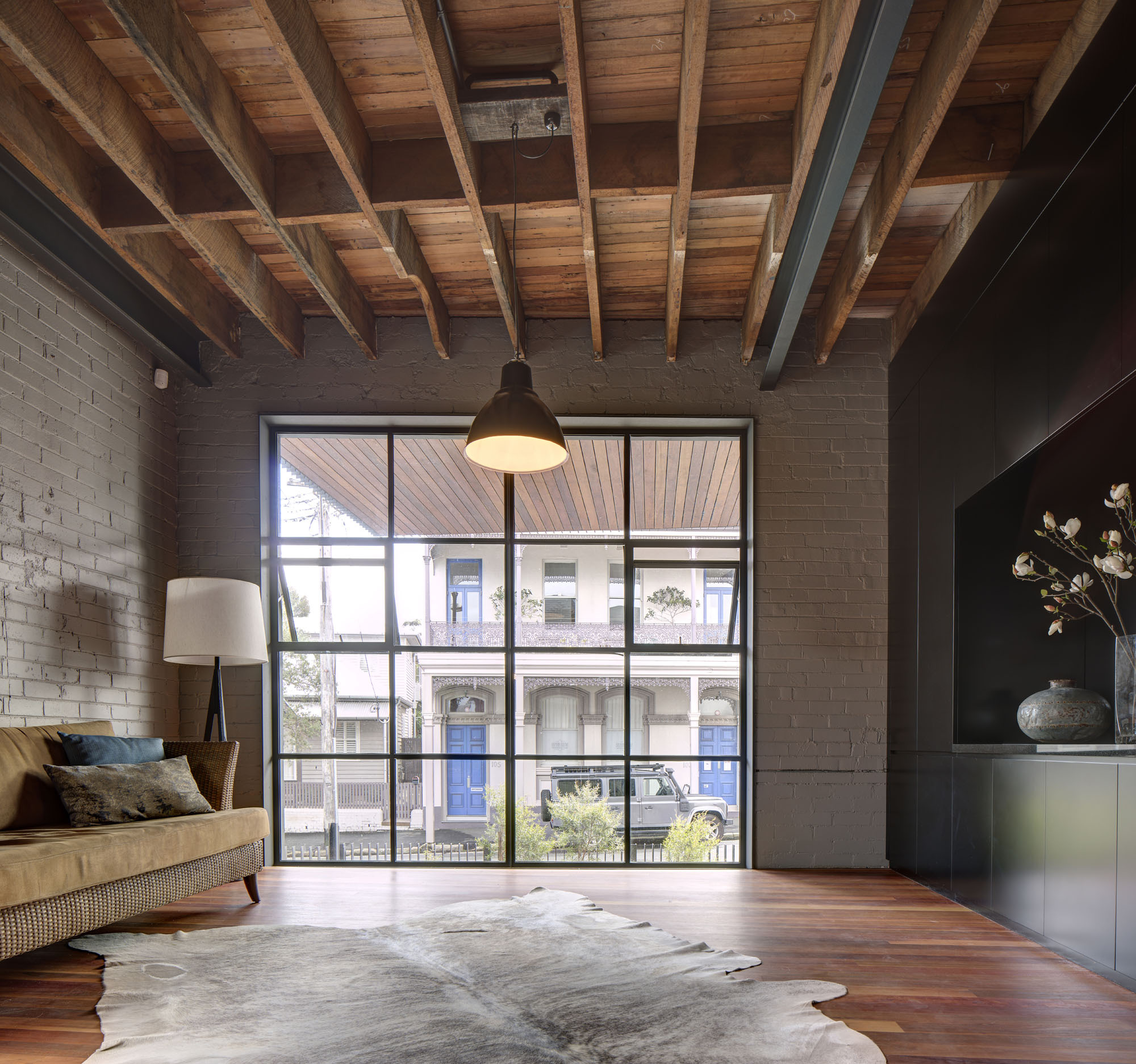
If your home has an industrial past, embrace the architectural features to really emphasize the heritage. Your living room is a great place to get started. If your home doesn't have an industrial story, you can still give off look with simple furniture and decor additions that pay homage to this stylish look.
The pillars of an industrial living room are exposed beams, original architectural details and a color palette of black, brown, white, grey. Think exposed, raw materials - reclaimed wood, iron, brick, concrete, steel.
This living area by Carter Williamson was in an old mill, and the ambition was to preserve the industrial and history of the building while creating an inspiring home. 'Inside 102 The Mill, its past industrial life is wonderfully evident,' says Shaun Carter.
'The recycled three-story brick wall follows the staircase up, perfectly complimenting the steel beam elements on display throughout the home. Enveloped by the staircase, uncovered above the kitchen, 102 The Mill embraces its old and new structural elements instead of hiding them.' The living area has been softened with a cowhide rug and soft furnishings.
How do I choose an interior theme?
When thinking about your living room and what style might work for you, first and foremost think about what makes you feel calm. Do you feel at peace when surrounded by your collectable items, pieces of art, bits and pieces collected throughout your lifetime? Or do you feel most calm in a snug, dark and moody setting. Perhaps its a pared back color scheme of neutrals or the clean lines of minimalism that help you relax. The living room is a space for decompressing at the end of the day, so think about what you need around you to help you do this. This will steer you on the right path to identifying the living room style for you.
Other factors to consider are that living rooms need to stand the test of time. 'They need to be somewhat timeless as well as on trend so you don’t need to redecorate every couple years,' says Eugene.
Also think about the user. 'The use and size of the space will be completely different for a single person versus a couple or a family with five kids and a dog.'
Another thing to consider is the proportion of your living room. Will your chosen aesthetic really work for your home and its architectural features and proportions? Determine if the living room is sized properly, in terms of scale, and if the ceiling height is appropriate. If you start noticing things like the room is too small, too big, or a wall is too long, short, or has too much echo, that’s when your design is not quite right.
Be The First To Know
The Livingetc newsletters are your inside source for what’s shaping interiors now - and what’s next. Discover trend forecasts, smart style ideas, and curated shopping inspiration that brings design to life. Subscribe today and stay ahead of the curve.

Former content editor at Livingetc.com, Oonagh is an expert at spotting the interior trends that are making waves in the design world. She has written a mix of everything from home tours to news, long-form features to design idea pieces, as well as having frequently been featured in the monthly print magazine. She is the go-to for design advice in the home. Previously, she worked on a London property title, producing long-read interiors features, style pages and conducting interviews with a range of famous faces from the UK interiors scene, from Kit Kemp to Robert Kime. In doing so, she has developed a keen interest in London's historical architecture and the city's distinct tastemakers paving the way in the world of interiors.
-
 Turns Out the Coolest New Café is Actually In Your Kitchen — Here's How to Steal the Style of TikTok's Latest Trend
Turns Out the Coolest New Café is Actually In Your Kitchen — Here's How to Steal the Style of TikTok's Latest TrendGoodbye, over-priced lattes. Hello, home-brewed coffee with friends. TikTok's 'Home Cafe' trend brings stylish cafe culture into the comfort of your own home
By Devin Toolen Published
-
 5 Bathroom Layouts That Look Dated in 2025 — Plus the Alternatives Designers Use Instead for a More Contemporary Space
5 Bathroom Layouts That Look Dated in 2025 — Plus the Alternatives Designers Use Instead for a More Contemporary SpaceFor a bathroom that feels in line with the times, avoid these layouts and be more intentional with the placement and positioning of your features and fixtures
By Lilith Hudson Published